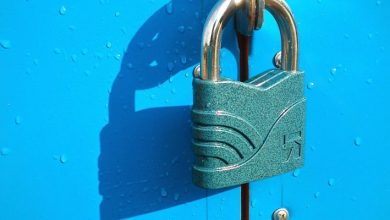The Role of Two-Factor Authentication in Preventing Phishing

- Understanding Two-Factor Authentication and Its Importance
- How Two-Factor Authentication Adds an Extra Layer of Security
- The Growing Threat of Phishing Attacks and the Need for Stronger Security Measures
- Exploring the Effectiveness of Two-Factor Authentication in Preventing Phishing
- Tips for Implementing Two-Factor Authentication to Safeguard Against Phishing
- The Future of Cybersecurity: The Role of Two-Factor Authentication in Combatting Phishing
Understanding Two-Factor Authentication and Its Importance
Two-factor authentication is a security process that requires users to provide two different factors to verify their identity. This typically involves something the user knows, such as a password, and something the user has, such as a smartphone or security token. By requiring two factors for authentication, two-factor authentication significantly enhances security compared to traditional password-only systems.
Implementing two-factor authentication is crucial in today’s digital landscape, where cyber threats such as phishing attacks are becoming increasingly sophisticated. Phishing attacks involve tricking individuals into revealing sensitive information, such as login credentials, by posing as a trustworthy entity. By adding an extra layer of security through two-factor authentication, organizations can significantly reduce the risk of unauthorized access to sensitive data.
One of the key benefits of two-factor authentication is that even if a cybercriminal manages to obtain a user’s password through a phishing attack, they would still need the second factor to access the account. This additional barrier makes it much harder for attackers to compromise accounts, thereby providing an extra layer of defense against unauthorized access.
Furthermore, two-factor authentication can help organizations comply with industry regulations and data protection laws by ensuring that only authorized individuals have access to sensitive information. By implementing two-factor authentication, organizations can demonstrate a commitment to protecting customer data and safeguarding against potential data breaches.
In conclusion, understanding the importance of two-factor authentication in preventing phishing attacks is essential for organizations looking to enhance their cybersecurity posture. By requiring two factors for authentication, organizations can significantly reduce the risk of unauthorized access and protect sensitive data from cyber threats. Implementing two-factor authentication is a proactive step towards strengthening security measures and safeguarding against potential data breaches.
How Two-Factor Authentication Adds an Extra Layer of Security
Two-factor authentication (2FA) adds an extra layer of security to your online accounts by requiring not only a password and username but also something that only the user has on them, such as a piece of information only they would know or have immediately to hand. This additional step makes it much harder for attackers to gain access to your accounts, even if they have obtained your login credentials through phishing attempts or data breaches.
When you enable two-factor authentication on your accounts, you are essentially adding a second lock to the door. Even if a cybercriminal manages to get past the first lock by stealing your password, they would still need the second factor, typically a code sent to your phone or generated by an authentication app, to successfully log in. This significantly reduces the risk of unauthorized access to your sensitive information.
By requiring two factors to authenticate your identity, two-factor authentication helps to verify that you are who you say you are, adding an extra layer of protection to your accounts. This extra step can thwart phishing attacks, where cybercriminals attempt to trick you into giving away your login credentials by posing as a legitimate entity. With 2FA in place, even if you inadvertently provide your password, the attacker would still be missing the second factor needed to access your account.
The Growing Threat of Phishing Attacks and the Need for Stronger Security Measures
Phishing attacks have become an increasingly prevalent threat in today’s digital landscape, with cybercriminals becoming more sophisticated in their tactics. These attacks involve deceptive emails or messages that trick individuals into divulging sensitive information such as passwords, credit card numbers, or personal details. The consequences of falling victim to a phishing attack can be severe, including identity theft, financial loss, and reputational damage.
As phishing attacks continue to grow in frequency and complexity, it is crucial for individuals and organizations to implement stronger security measures to protect against these threats. One effective way to enhance security is through the use of two-factor authentication (2FA). 2FA adds an extra layer of protection by requiring not only a password but also a second form of verification, such as a fingerprint scan, facial recognition, or a unique code sent to a mobile device.
By requiring two separate pieces of information to access an account, 2FA significantly reduces the risk of unauthorized access, even if a cybercriminal manages to obtain a user’s password through a phishing attack. This added layer of security makes it much more difficult for attackers to compromise accounts and steal sensitive information. Additionally, 2FA can provide peace of mind for individuals and organizations knowing that their data is better protected against malicious actors.
In conclusion, the growing threat of phishing attacks underscores the importance of implementing stronger security measures such as two-factor authentication. By incorporating 2FA into their security protocols, individuals and organizations can significantly reduce the risk of falling victim to phishing attacks and protect their sensitive information from unauthorized access. It is essential to stay vigilant and proactive in the face of evolving cybersecurity threats to safeguard personal and sensitive data effectively.
Exploring the Effectiveness of Two-Factor Authentication in Preventing Phishing
One of the key methods for preventing phishing attacks is the implementation of two-factor authentication (2FA). This additional layer of security requires users to provide two different factors to verify their identity, such as a password and a unique code sent to their mobile device.
Research has shown that 2FA can be highly effective in preventing phishing attempts. By requiring attackers to have access to both the user’s password and their mobile device, it significantly reduces the likelihood of unauthorized access to sensitive information.
Furthermore, 2FA has been found to be particularly effective in protecting against credential theft, a common goal of phishing attacks. Even if a user falls victim to a phishing email and enters their login credentials on a fake website, the attacker would still need the second factor to gain access to the account.
Overall, the use of 2FA as a security measure can greatly enhance the protection of individuals and organizations against phishing attacks. It serves as a robust defense mechanism that adds an extra layer of security to the authentication process, making it much more difficult for cybercriminals to successfully carry out their malicious activities.
Tips for Implementing Two-Factor Authentication to Safeguard Against Phishing
Implementing two-factor authentication (2FA) is a crucial step in protecting your online accounts from phishing attacks. By requiring users to provide two different factors of authentication, such as a password and a unique code sent to their phone, 2FA adds an extra layer of security that can help prevent unauthorized access to sensitive information.
Here are some tips to help you effectively implement 2FA to safeguard against phishing:
1. **Choose a reliable 2FA method:** When selecting a 2FA method, opt for one that is secure and easy to use for your users. Popular options include SMS codes, authenticator apps, and hardware tokens.
2. **Educate your users:** Provide clear instructions on how to set up and use 2FA to all your users. Encourage them to enable 2FA on all their accounts and explain the importance of this added security measure in protecting against phishing attacks.
3. **Monitor 2FA usage:** Regularly monitor the usage of 2FA on your accounts to ensure that all users have enabled this feature. This will help you identify any potential security gaps and take appropriate action to address them.
4. **Update your 2FA settings:** Periodically review and update your 2FA settings to ensure that they are up to date and aligned with best practices. Consider implementing additional security measures, such as biometric authentication, for added protection.
5. **Stay informed about phishing trends:** Stay up to date on the latest phishing trends and tactics used by cybercriminals to target individuals and organizations. By being aware of these threats, you can better prepare your users to recognize and avoid falling victim to phishing attacks.
By following these tips and implementing 2FA effectively, you can significantly reduce the risk of falling victim to phishing attacks and protect your sensitive information online.
The Future of Cybersecurity: The Role of Two-Factor Authentication in Combatting Phishing
Two-factor authentication (2FA) is becoming increasingly crucial in the fight against phishing attacks. By requiring users to provide two different forms of identification before granting access to an account or system, 2FA adds an extra layer of security that can help prevent unauthorized access.
Phishing attacks are a common method used by cybercriminals to steal sensitive information such as login credentials, credit card numbers, and personal data. These attacks often involve tricking users into clicking on malicious links or entering their information into fake websites that mimic legitimate ones.
By implementing 2FA, organizations can significantly reduce the risk of falling victim to phishing attacks. Even if a cybercriminal manages to obtain a user’s login credentials through a phishing scam, they would still need access to the second form of identification (such as a unique code sent to a mobile device) to successfully log in.
As technology continues to advance, cybercriminals are finding increasingly sophisticated ways to carry out phishing attacks. This makes it more important than ever for organizations to prioritize cybersecurity measures such as 2FA to protect their sensitive data and systems.



